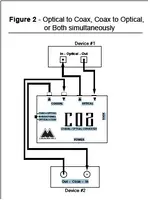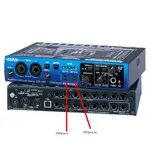ido1957
9K Gold Member
Looking into computer recording and "mixing in the box" (currently adat). I have a couple of SPDIF hardware pieces that I would like to continue using.
1) Reverb unit PCM80 2) Compressor Triple C
- SONAR 6 LE
- USB interface (like an EDIROL UA-101)
- how would you work these two in when mixing?
- can you apply reverb to the mix tracks individually, send it to a separate track, save the track, then apply compressor as I mix down?
- would you daisy chain these things using SPDIF? I guess I could fiddle with the reverb wet/dry setting but I'd rather do an aux send with the reverb to a separate track like I do now. Or do I have to connect one SPDIF, apply it, then switch the SPDIF to the other, apply it etc. patch bay style...
Right now I apply reverb to the individual tracks using aux send back to a channel and mix everything down with compressor on the main inserts.
I'm not looking into plugins yet. I'd like to keep using the hardware units if possible.
Let me know what you think....
1) Reverb unit PCM80 2) Compressor Triple C
- SONAR 6 LE
- USB interface (like an EDIROL UA-101)
- how would you work these two in when mixing?
- can you apply reverb to the mix tracks individually, send it to a separate track, save the track, then apply compressor as I mix down?
- would you daisy chain these things using SPDIF? I guess I could fiddle with the reverb wet/dry setting but I'd rather do an aux send with the reverb to a separate track like I do now. Or do I have to connect one SPDIF, apply it, then switch the SPDIF to the other, apply it etc. patch bay style...
Right now I apply reverb to the individual tracks using aux send back to a channel and mix everything down with compressor on the main inserts.
I'm not looking into plugins yet. I'd like to keep using the hardware units if possible.
Let me know what you think....




 Therefore I am stuck with spdif assuming it will work.
Therefore I am stuck with spdif assuming it will work.

